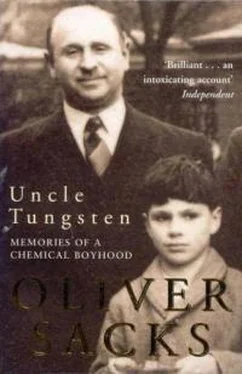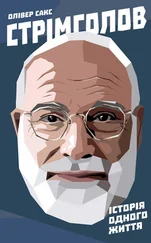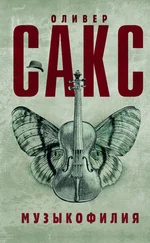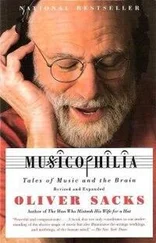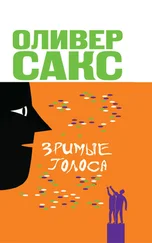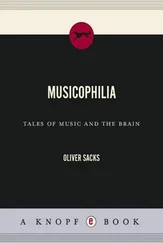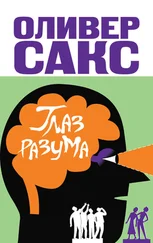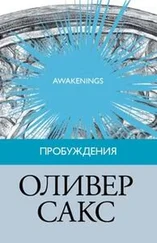My mother loved the garden, the large plane trees that edged Exeter Road, the lilacs that filled it with their scent in May, and the climbing roses that trellised its brick walls. She gardened whenever she could, and was especially attached to the fruit trees she had planted – a quince tree, a pear tree, two crab apples, and a walnut. She was particularly fond of ferns as well, and the ‘flower’ beds were almost entirely filled with them.
The conservatory, at the far end of the drawing room, was one of my favorite places, the place where, before the war, my mother had kept her most tender plants. It somehow escaped being shattered during the war, and when my own botanical interests blossomed, I shared it with her. I have tender memories of a tree fern, a woolly Cibotium , I tried to grow there in 1946, and a cycad, a Zamia , with stiff cardboard leaves.
* * *
Once, when my nephew Jonathan was a few months old, I picked up a packet of X-rays marked ‘J. Sacks’ that had been left in the lounge. I started to leaf through them curiously, then perplexedly, then with horror – for Jonathan was a nice-looking little baby, and no one would have guessed, without the X-rays, that he was hideously deformed. His pelvis, his little legs – they scarcely looked human.
I went to my mother with the X-rays, shaking my head. ‘Poor Jonathan…’ I started.
My mother looked puzzled. ‘Jonathan?’ she said. ‘Jonathan is fine.’
‘But the X-rays’, I said, ‘I’ve been looking at his X-rays.’
My mother looked blank, then burst into a roar of laughter, and laughed until the tears ran down her face. ‘J’ did not stand for Jonathan, she finally said, but for another member of the household, Jezebel. Jezebel, our new boxer, had had some blood in her urine, and my mother had taken her to hospital to have a kidney X-ray. What I had taken for grotesquely deformed human anatomy was, in fact, perfectly normal canine anatomy. How could I have made such an absurd mistake? The least knowledge, the least common sense, would have made it all clear to me – my mother, a professor of anatomy, shook her head in disbelief.
* * *
My mother’s practice had moved, sometime in the 1930 s, from general surgery to gynecology and obstetrics. There was nothing she loved more than a challenging delivery – an arm presentation, a breech – brought off successfully. But she would occasionally bring back malformed fetuses to the house – anencephalic ones with protruding eyes at the top of their brainless, flattened heads, or spina bifida ones in which the whole spinal cord and brainstem were exposed. Some of these had been still-born, others she and the matron had quietly drowned at birth (‘like a kitten’, she once said), feeling that if they lived, no conscious or mental life would ever be possible for them. Eager that I should learn about anatomy and medicine, she dissected several of these for me, and then insisted, though I was only eleven, that I dissect them myself. She never perceived, I think, how distressed I became, and probably imagined that I was as enthusiastic here as she was. Though I had taken to dissecting naturally, by myself, with earthworms and frogs and with my octopus, the dissection of these human fetuses filled me with revulsion. My mother often told me how she had worried about the growth of my own skull as an infant, fearing that the fontanelles had closed too early, and that I would be, in consequence, a microcephalic idiot. Thus I saw in these fetuses what (in imagination) I, too, could have been, and this made it more difficult to distance myself, and heightened my horror.
Though it was understood, almost from my birth, that I would be a doctor (and specifically, my mother hoped, a surgeon), these precocious experiences turned me against medicine, made me want to escape and turn to plants, which had no feelings, to crystals and minerals and elements, above all, for they existed in a deathless realm of their own, where sickness and suffering, pathology, held no sway.
When I was fourteen, my mother arranged with a colleague, a professor of anatomy at the Royal Free Hospital, that I should be inducted into human anatomy, and Professor G., agreeable, took me to the dissecting room. There, on long trestles, lay the bodies, wrapped in yellow oilskin (to keep the exposed tissues from drying when they were not being dissected). This was the first time I had ever seen a corpse, and the bodies looked oddly shrunken and small to me. There was a horrible smell of mortified tissue and preservative in the air, and I came near to fainting as I went in – there were spots before my eyes and a sudden surge of nausea. Professor G. said she had selected a body for me, the body of a fourteen-year-old girl. Some of the girl had been dissected already, but there was a nice, untouched leg I could start on. I had a desire to ask who the girl was, what she had died of, what had brought her to such a pass – but Professor G. preferred no information, and in a way I was glad, for I dreaded to know. I had to think of this as a cadaver, a nameless thing of nerves and muscles, tissues and organs, to be dissected as one would dissect a worm or a frog, to learn how the organic machine was put together. There was a manual of anatomy, Cunningham’s Manual , at the head of the table; this was the copy the medical students used when they were dissecting, and its pages were yellowed and greasy with human fat.
My mother had bought me a Cunningham the week before, so that I had some knowledge, but this in no way prepared me for the actual experience, the emotional experience, of dissecting my first body. Professor G. started me off with a broad initial incision down the thigh, parting the fat and exposing the fascia beneath. She gave me various tips, then she thrust the scalpel into my hand – she would be back in half an hour, she said, to see how I was getting on.
It took me a month to dissect the leg; the most difficult was the foot, with its little muscles and stringy tendons, and the knee joint, with all its complexity. Occasionally I could feel how beautifully everything was put together, could enjoy an intellectual and esthetic pleasure such as my mother got from surgery and anatomy. Her own professor, in her medical student days, had been the famous comparative anatomist Frederic Wood-Jones. She loved the books he had written – Arboreal Man, The Hand , and The Foot – and cherished the copies he had inscribed for her. She was amazed when I said I could not ‘understand’ the foot. ‘But it is like an arch’, she said, and started drawing feet – drawings an engineer might have done, from every angle, to show how the foot combined stability with flexibility, how beautifully designed or evolved it was for walking (though bearing obvious residues of its original, prehensile function too).
I lacked my mother’s powers of visualization, her strong mechanical and engineering sense, but I loved it when she talked of the foot and drew, in rapid succession, the feet of lizards and birds, horses’ hooves, lions’ paws, and a series of primate feet. But this delight in understanding and appreciating anatomy was lost, for the most part, in the horror of the dissection, and the feeling of the dissecting room spread to life outside – I did not know if I would ever be able to love the warm, quick bodies of the living after facing, smelling, cutting the formalin-reeking corpse of a girl my own age.
It was in Abe’s attic that I was introduced to cathode rays. He had a highly efficient vacuum pump, and an induction coil – a two-foot-long cylinder wound with miles and miles of densely coiled copper wire and set on a mahogany base. There were two large moveable brass electrodes above the coil, and when the coil was switched on, there would leap between them a formidable spark, a miniature lightning bolt, something out of Dr. Frankenstein’s lab. Uncle showed me how he could separate the electrodes until they were too far apart to spark and then connect them to a yard-long vacuum tube. As he reduced the pressure in the electrified tube, a series of extraordinary phenomena appeared inside it: first a flickering light with red streamers like a miniature Aurora Borealis, then a brilliant column of light filling the whole tube. As the pressure was lowered still further, the column broke into discs of light separated by dark spaces. Finally, at a ten-thousandth of an atmosphere, everything became dark again inside the tube, but the end of the tube itself started to glow with a brilliant fluorescence. The tube was now filled, Uncle said, with cathode rays, little particles shot off the cathode with a tenth the speed of light, and so energetic that if one converged them with a saucer-shaped cathode they could heat a piece of platinum foil to red heat. I was a little afraid of these cathode rays (as I had been, as a child, of the ultraviolet rays in the surgery), for they were both potent and invisible, and I wondered if they could leak out of the tube and dart at us, unseen, in the darkened attic.
Читать дальше
